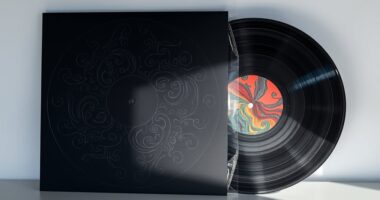Seriography outperforms digital prints because it’s handcrafted, giving each poster a rich texture and vibrant color that digital simply cannot match. The artisanal process, with natural materials and custom inks, adds character and authenticity, making it more durable and long-lasting. Limited editions increase their appeal, creating a sense of exclusivity and collectibility. Plus, sustainable methods ensure these posters stay pristine over time. Keep exploring to discover how seriography combines quality, art, and eco-friendly practices for a truly special piece.
Key Takeaways
- Seriography offers rich texture and layered colors that digital prints cannot replicate, enhancing visual depth.
- Handmade artisanal techniques ensure each poster is unique, adding authenticity and collectible value.
- Durable materials and archival inks provide long-lasting quality that resists fading over time.
- Limited editions create exclusivity, increasing desirability and perceived worth among collectors.
- Eco-friendly production methods ensure sustainability while maintaining vibrant, high-quality finishes.
The Artisanal Touch of Seriography
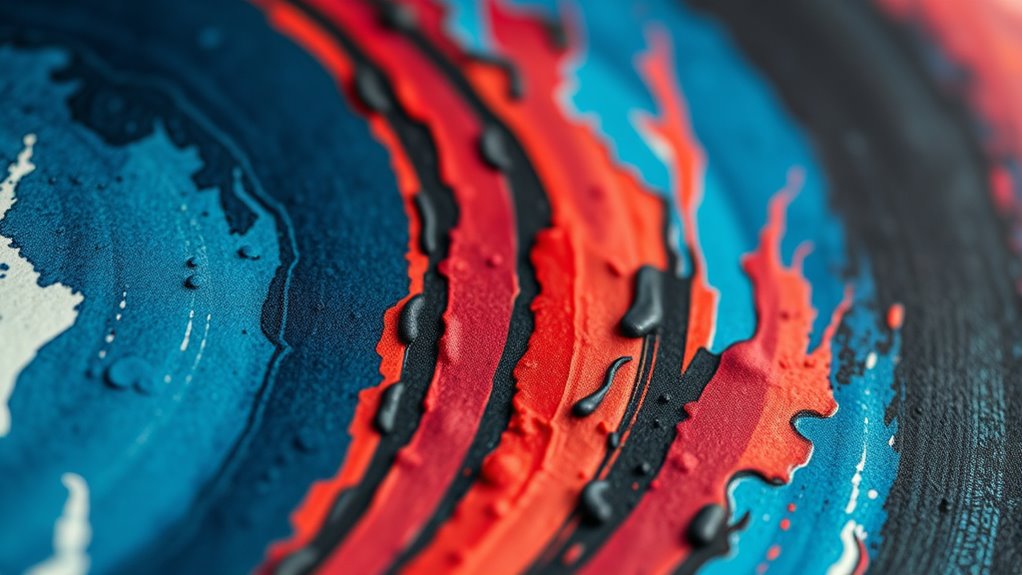
Seriography, also known as screen printing, offers a handcrafted quality that sets limited-run posters apart from mass-produced prints. When you choose seriography, you’re embracing an artistic process that involves careful craftsmanship at every step. Each poster is created by applying ink through a mesh screen, allowing for rich, vibrant colors and textures that digital prints often lack. This method gives your posters a unique, tactile feel, emphasizing the artist’s skill and attention to detail. Unlike automated printing, seriography involves manual work, making each piece slightly different and more personal. You’ll notice the subtle imperfections and variations that reflect the artist’s hand, adding character and authenticity. This artisanal touch elevates your posters, making them truly special and more meaningful. Additionally, the use of natural materials in the process can enhance the organic and authentic feel of each piece. The tactile quality and handcrafted process also contribute to the perceived value, which is further supported by the artisanal techniques that distinguish seriography from digital methods. These factors, along with the ability to incorporate custom colors, make these posters more prized by collectors and enthusiasts alike.
Superior Quality and Durability
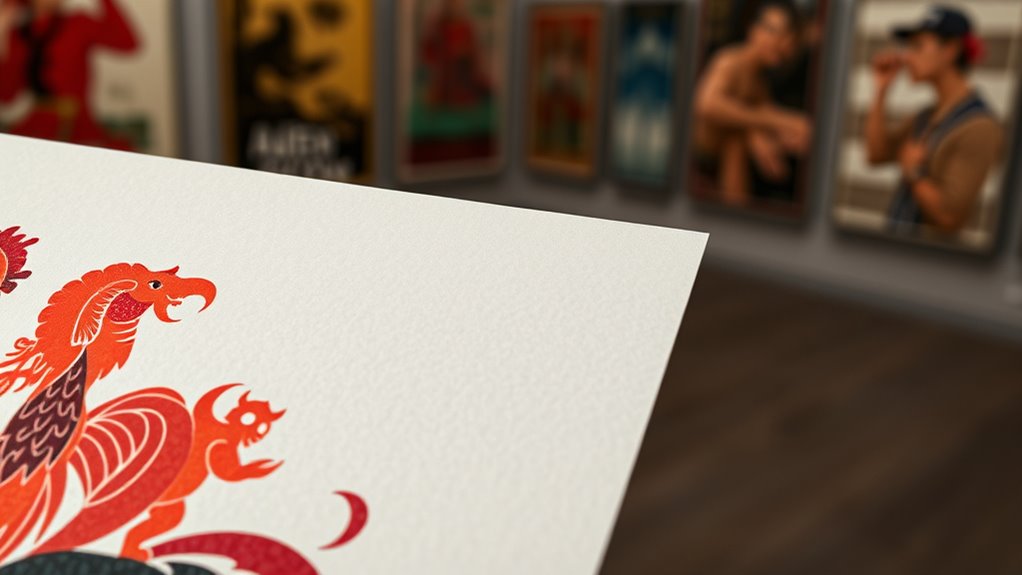
The handmade nature of seriography not only enhances its artistic appeal but also results in posters that stand the test of time. The inks and papers used are chosen for their longevity, ensuring your posters resist fading and deterioration. This careful selection of materials contributes to the myelination process, which increases neural efficiency—here, it translates to the durability and high quality of the finished product. Unlike digital prints, which can degrade quickly, seriography offers superior durability through quality materials and craftsmanship. This process creates a dense, vibrant finish that maintains its integrity over years. Incorporating lifestyle principles such as selecting high-quality materials and craftsmanship ensures the longevity of your posters. To illustrate, here’s a comparison:
| Feature | Seriography | Digital Prints |
|---|---|---|
| Ink Quality | Archival inks resistant to fading | Standard inks, fade faster |
| Material Strength | Heavy, durable paper | Lighter, less durable paper |
| Longevity | Decades with proper care | Usually fades within a few years |
You get a poster that’s built to last, making it a worthwhile investment. Material durability is a key factor that sets seriography apart from digital printing methods.
Unique Aesthetic and Color Richness
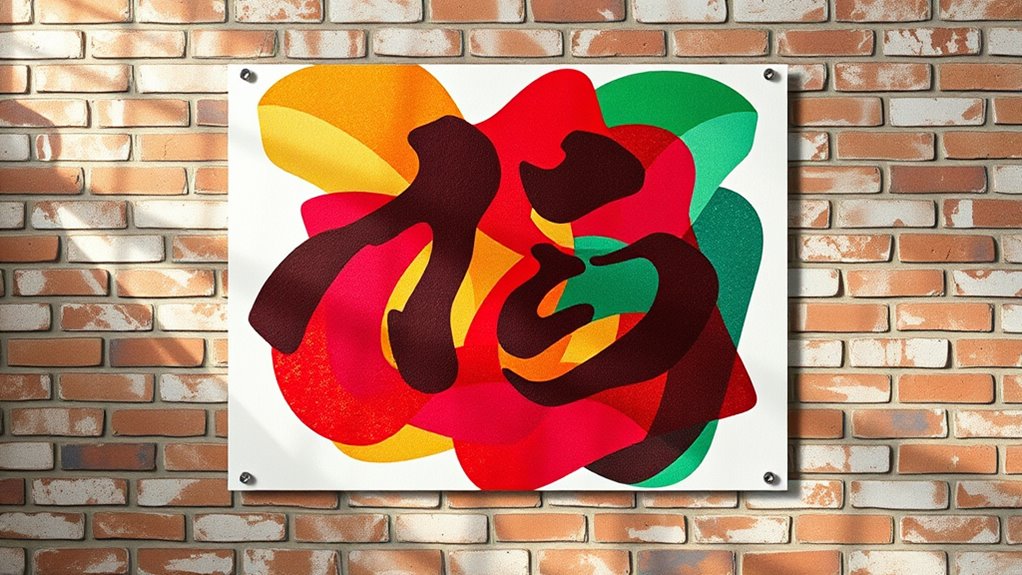
Because of its handcrafted nature, seriography produces posters with a distinctive aesthetic that digital prints often can’t match. The tactile quality and layered textures give each piece a depth that feels alive and vibrant. This process allows for richer, more nuanced colors, making visuals pop with intensity and warmth. You’ll notice the subtle variations in ink application, adding character and authenticity to every print. Additionally, the layered color application inherent in seriography enhances the richness and depth, setting it apart from digital reproductions. The handcrafted process also means each poster contains unique qualities that reflect the artisan’s skill and artistic intent, further elevating its appeal. Moreover, the artisanal techniques employed can evoke a sense of tradition and craftsmanship that resonates with collectors and art enthusiasts alike, emphasizing the value of traditional printing methods.
Limited Edition Appeal and Collectibility
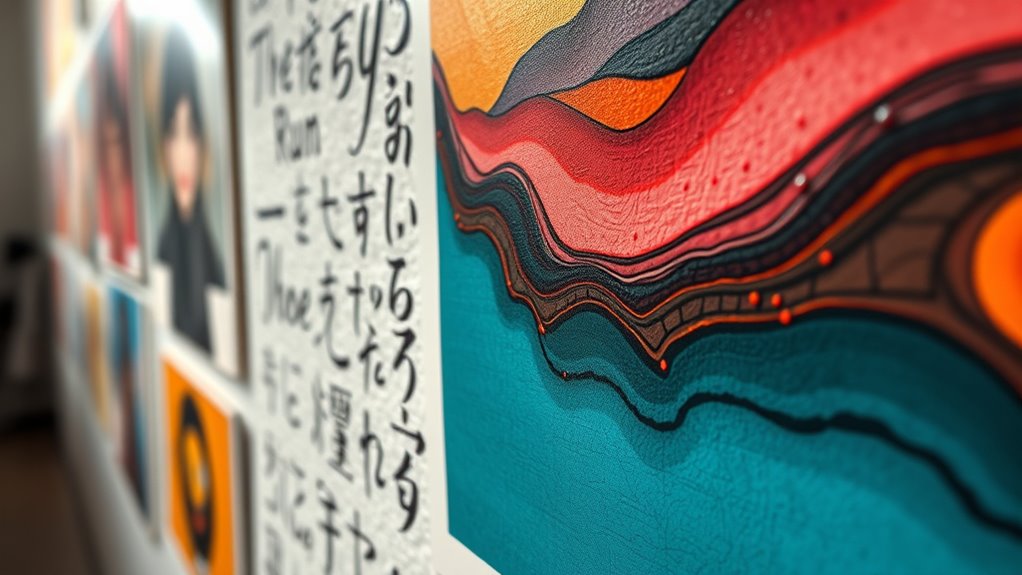
Limited-run posters naturally become more desirable because their scarcity enhances their value. When you hold a limited edition piece, you own a rare artifact that few others can claim. This exclusivity fuels a sense of pride and connection, transforming a simple print into a collectible treasure. People are drawn to the idea of owning something unique, a tangible symbol of their taste and personality. Additionally, the collective consciousness surrounding limited editions often increases their desirability and perceived worth. Recognizing the importance of trademark in branding can also elevate the exclusivity of limited-edition pieces, making them more attractive to collectors. Below is a table illustrating how limited editions evoke emotions:
| Scarcity | Emotional Impact |
|---|---|
| Rarity | Feelings of uniqueness |
| Exclusivity | Pride and ownership |
| Limited availability | Special connection |
| Collectibility | Long-term value |
This emotional resonance makes limited-run posters more than art—they become meaningful keepsakes.
Sustainable and Long-Lasting Production Methods
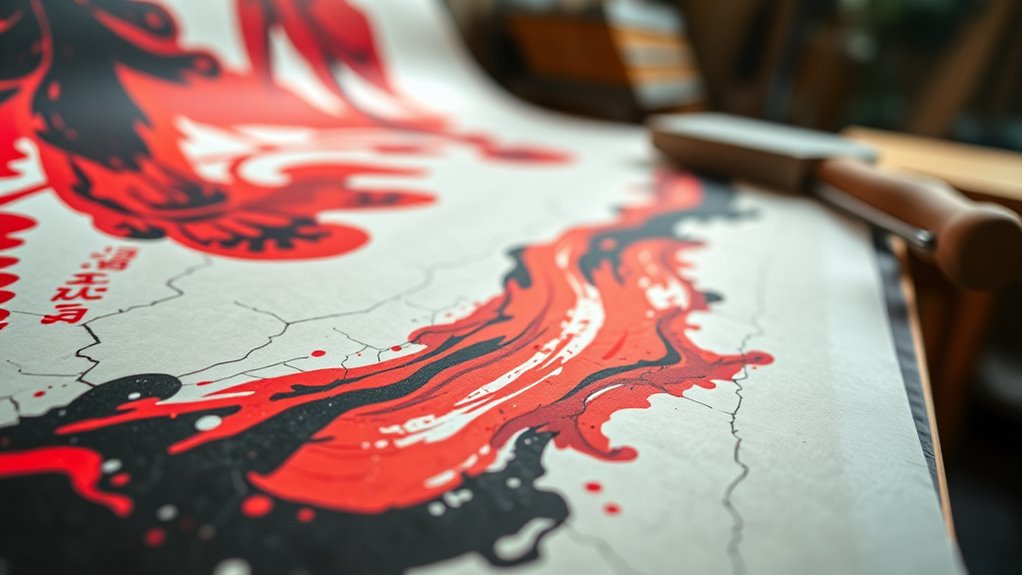
To guarantee your limited-run posters stand the test of time, adopting sustainable and long-lasting production methods is essential. Using eco-friendly inks, recycled paper, and energy-efficient printing techniques ensures your posters remain vibrant and durable without harming the environment. Choosing high-quality materials not only enhances longevity but also preserves the artwork’s integrity over years. Additionally, implementing responsible sourcing and waste reduction practices minimizes your ecological footprint. These methods appeal to environmentally conscious collectors who value sustainability alongside exclusivity. By prioritizing eco-friendly processes, you demonstrate a commitment to quality and sustainability that resonates with your audience. Furthermore, understanding the importance of UV protection can help prevent fading and damage caused by light exposure over time. Incorporating tableware materials that are resistant to wear can also extend the lifespan of your posters, ensuring they stay pristine for years to come. This careful selection of printing techniques can significantly reduce environmental impact while maintaining high-quality results. Paying attention to certified eco-friendly standards can further enhance your credibility and appeal in the competitive art market. Ultimately, sustainable production methods help your posters endure physically and socially, elevating their status as collectible, environmentally responsible art pieces.
Frequently Asked Questions
How Does Seriography Differ Technically From Other Printmaking Techniques?
Serigraphy, or screen printing, differs technically from other printmaking methods by using a mesh screen to apply ink through open areas, creating vibrant, durable images. Unlike digital printing, which uses inkjet or laser technology, serigraphy allows for thicker ink layers and bold colors. You control the process closely, making it ideal for limited editions and artistic effects, giving your prints a unique, handcrafted quality that digital methods can’t easily replicate.
What Factors Influence the Cost of Limited-Run Seriography Posters?
Oh, the thrill of choosing between mass-produced digital prints and the luxury of limited-run seriography posters! Your costs depend on several factors: the intricacy of your design, the number of colors used, the quality of inks and paper, and the time required for each print. You’ll also pay for skilled craftsmanship and limited editions, making each piece a costly but treasured collector’s item.
Can Seriography Reproductions Be Customized or Personalized?
You can definitely customize seriography reproductions. Artists often allow you to choose colors, add personal touches, or select specific sizes. While seriography traditionally offers limited editions, some vendors provide options for personalization within those limits. This makes each poster unique to you, giving it a special touch that digital prints might not offer. Just check with the printer or artist to see what customization options are available for your chosen piece.
How Do Collectors Verify the Authenticity of Limited-Edition Seriography Posters?
Imagine holding a poster, feeling the textured ink and seeing the subtle variations in each print. To verify its authenticity, check for a certificate of authenticity, signed and numbered by the artist. Look for unique markings, embossed seals, or official stamps on the margins. Research the seller’s reputation and ask for provenance details. These steps guarantee your limited-edition seriography is genuine, preserving its value and artistic integrity.
What Are the Best Display Conditions to Preserve Seriography Prints?
To preserve your seriography prints, you should display them away from direct sunlight, which can cause fading. Keep the temperature and humidity stable, ideally around 70°F and 50% humidity. Use acid-free mats and UV-protective glass to prevent deterioration. Handle the prints with clean gloves to avoid oils and dirt. Regularly inspect them for signs of damage, ensuring they stay vibrant and in excellent condition over time.
Conclusion
Think of seriography as a rare gemstone—crafted with care, shining brighter with each glance. When you choose limited-run posters, you’re not just buying art; you’re investing in a piece that’s crafted to last and stands out from the digital crowd. The artisanal touch, vibrant colors, and collectible appeal make these prints more than just decoration—they’re a timeless story you can hold and cherish. Embrace the craftsmanship and let your walls tell a richer story.



